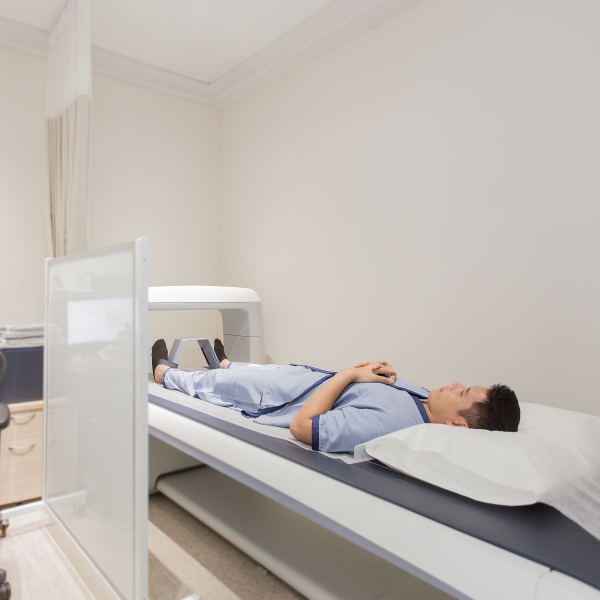Diabetes and How to Keep It at Bay
Type 2 diabetes is a non-communicable disease (NCDs) and metabolic disorder that results in increased blood sugar. It can lead to various complications such as coronary artery disease, macular degeneration, chronic kidney disease, as well as peripheral neuropathy. Among the 4 types of diabetes, 90% of patients are diagnosed as type 2 diabetes.
Type 2 diabetes is caused by insulin resistance, meaning that the body cannot respond effectively to insulin. As a result, less glucose could be absorbed into cells, causing high blood sugar. Type 2 diabetes is caused by various factors, including:
1. Obesity
It is a condition in which a person’s body fat exceeds the criteria, which are 28% in men and 32% in women. The accumulation of fat increases inflammation, resulting in insulin resistance. With an increase of 2 kilograms/m2 in body mass index (BMI), the risk of diabetes is raised by 23% in men and 27% in women.
2. Sleep deprivation
Researchers found that people who sleep less than 4 hours per day have their glucose disposal rate lowered by 40% and insulin response to glucose reduced by 30% compared to those with sufficient sleep. Therefore, people with poor sleep quality as well as sleep deprivation have a higher risk of developing diabetes.
3. Smoking
Smokers are 30-40% more likely to develop diabetes than non-smokers. Increased nicotine levels inhibit glucose uptake in muscles, and the heavier you smoke, the higher your diabetes risk. Even after quitting smoking, the risk of type 2 diabetes remains high for another 10 years.
4. Lack of exercise
This results in decreased insulin sensitivity and impaired glucose tolerance, as well as the tendency to gain weight from inactivity.
5. Depression
This mental state is associated with neurotransmitters and inflammation that induces insulin resistance, as well as increased secretion of cortisol (stress hormone), which can raise blood sugar levels.
6. High levels of fats are in the blood
The increase of LDL (bad cholesterol) and the decrease of HDL (good cholesterol) lead to beta-cell dysfunction, reducing insulin secretion in turn.
7. High blood pressure
This condition increases sympathetic nervous system activity, resulting in decreased glucose uptake. From there, insulin resistance may worsen and ultimately develop into diabetes.
8. Ageing
As a body ages, it loses muscle mass and accumulates more fat, causing chronic inflammation which contributes to insulin resistance.
9. Race/Ethnicity
Compared to white people, Asians and Blacks are at higher risks of diabetes. Although lacking a clear explanation, this may be related to genetic, physical, and environmental factors, along with average BMI and fat accumulation, as well as lower insulin sensitivity.
10. Family history of diabetes
Reflecting genetic and environmental factors, people with family history of diabetes are at approximately twice higher risk of diabetes. However, if the relative with diabetes is an immediate family member, the risk increases up to 11 times. Moreover, people with 35 kg/m2 BMI or higher with family history of diabetes are 26 times more likely to develop diabetes, while those with the same BMI but without family history are only 6 times more likely to have diabetes.
Even though we cannot choose our genetics, we can change our environment to prevent diabetes. A study by the Diabetes Prevention Program (DPP) published in the New England Journal of Medicine in 2002 revealed that lifestyle change helps reduce the risk of diabetes by 58% compared to only 31% from metformin prescription.
Apparently, behavioural adjustment is crucial in preventing diabetes. The following suggestions should be followed together:
-
Weight management
Obesity and overweight are a major risk factor of type 2 diabetes. Losing 7% of weight within 6 months, or an average of 0.5-1 kg per week by reducing fat mass and maintaining muscle mass is recommended. Women should aim to keep body fat within 32% and men within 28%.
-
Follow healthy and practical diets
The key is to choose a diet that suits you and is practical in the long run. Whether you choose a low-fat, low-carbs, or plant-based diet, be sure to eat healthy and avoid refined and processed foods. We could opt for quality carbohydrates that offer vitamins, minerals, and dietary fibre such as unrefined cereals, nuts and legumes, vegetables, fruits, and lean meat.
-
Exercise moderately for 150 minutes a week
You can share it in 5 sessions of at least 30 minutes with exercises such as brisk walking or aerobic dancing. Exercise helps burn body fat and stimulates insulin sensitivity in muscle cells. It is recommended to rotate among cardio exercises, muscle training, and flexibility exercises.
-
Get enough sleep
It is widely recognized that sleeping at least 8-9 hours a day is an appropriate sleeping period. Stick to regular bed- and wake-up times and go to bed before 22:00. Avoid using electronic devices such as mobile phones for at least 2 hours before going to bed, as blue light will inhibit the secretion of melatonin and obstruct your sleep.
-
Stress management
Try out activities to help you unwind, such as meditation and mindful walking, taking up a hobby, or learning new things. Adopt a more optimistic attitude.
-
Give up unhealthy habits and substances
Quit smoking and drink in moderation, for example.
Changing your habits according to lifestyle medicine is an efficient and inexpensive method to prevent diabetes. Start today for a long and healthy life.
References
- Ismail L, Materwala H, Al Kaabi J. Association of risk factors with type 2 diabetes: A systematic review. Computational and Structural Biotechnology Journal. 2021;19:1759–85.
- Spiegel K, Leproult R, Van Cauter E. Impact of sleep debt on metabolic and endocrine function. The lancet. 1999;354(9188):1435-9.
- American Diabetes Association. Standards of medical care in diabetes—2022 abridged for Primary Care Providers. Clinical Diabetes. 2022;40(1):10–38.




